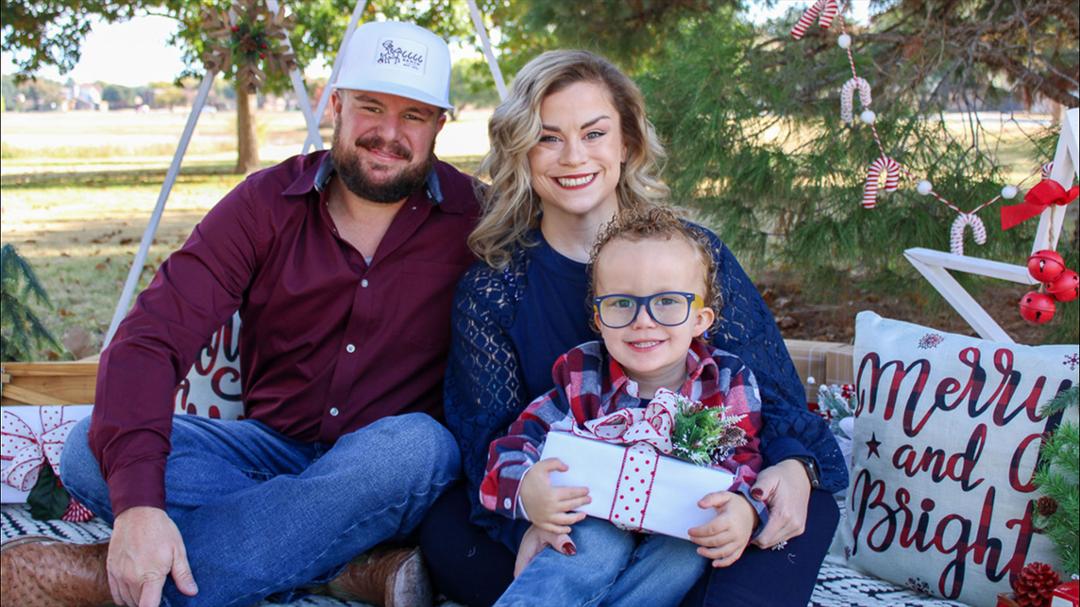Texas Tech staff member Samantha Dillard’s family ties to cancer inspired her to donate blood stem cells to help a 16-year-old boy fight acute lymphoblastic leukemia.
Samantha Dillard stared at the paper, pen in hand, for several minutes.
She’s not used to being speechless as the assistant director of marketing for TTU K-12, with more than 10 years of experience working in marketing and communications.
She had so much she wanted to write – so many words she wanted to share. But unlike in her profession, this time, she had to individually address someone she never met.
All she knew about the recipient of her letter was he was 16 years old, much taller than she and fighting for his life with the aid of blood stem cells she had just donated to him.
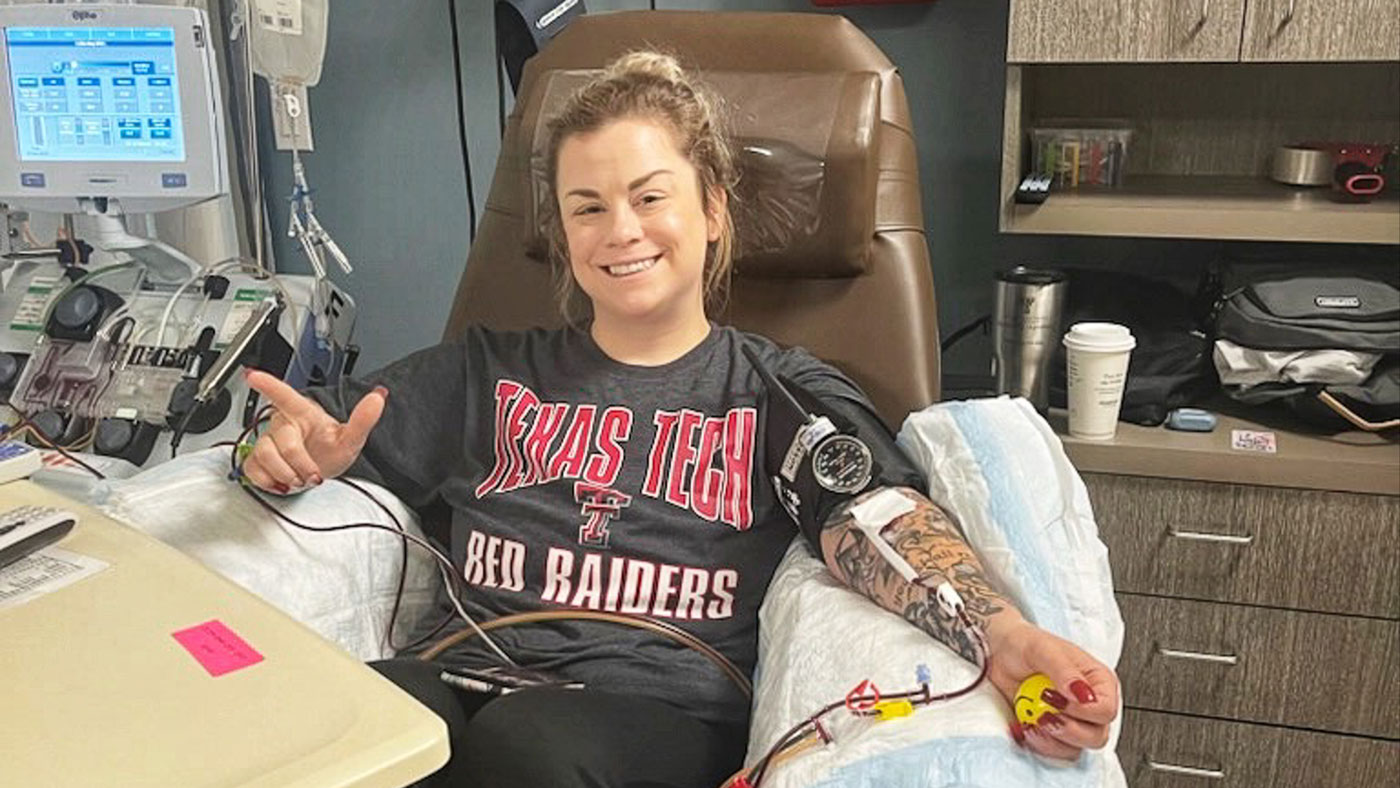
“It’s kind of an interesting circumstance,” she explained. “You’re only allowed to have anonymous communication within the first year. I couldn’t tell him anything super personal except what was going through my mind while donating and what I wished and hoped for him during his transplant day.”
Samantha had so many questions she wanted to ask about how he was feeling and how his transplant day went. Instead, she decided to share the answer to a question likely on his mind: why donate to a stranger?
As she put her pen to the paper, she only wished she could share as many details as she wanted about the two faces who came to mind.
Double Diagnoses
When Samantha was a child, her Granny, Faye Hamner, picked her and her two sisters up from school every day with snacks she specially packed for the reunion.
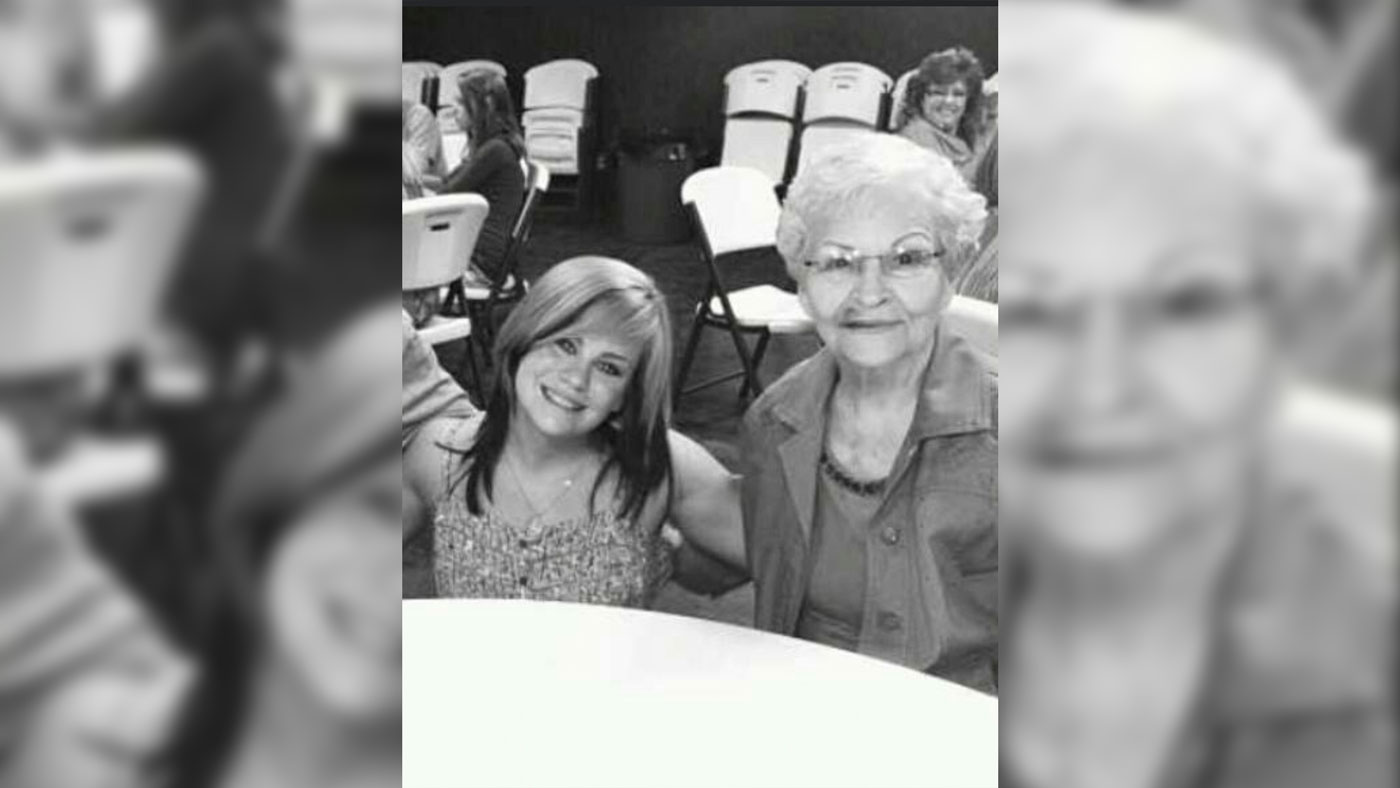
Samantha can’t look at pink Jell-O without thinking of her Granny’s signature dish at family holidays.
“She always made sure to give you a hug and a kiss and wanted to make sure you were taken care of,” Samantha remembered. “She was a very giving person and a hard worker.”
Samantha rarely played soccer without her Granny cheering in the stands. Even when she was in her early 70s and newly retired, she stayed in great shape.
But one day in 2009, Faye started feeling poorly. A checkup followed by a series of tests revealed she had acute lymphoblastic leukemia – a type of cancer in which the bone marrow produces too much of a certain type of white blood cell.
Samantha’s mother Dana Daniel, who is Faye’s daughter, remembers her mother pushing to stay present through her diagnosis.
“She just had surgery because she had a sarcoma in the middle ear, which was not good,” Dana explained. “But Sam was playing soccer at Dodge City College in Kansas, so they drove up and she made it through that game.”
Over a span of four years, that spirit became drained as Faye’s symptoms worsened even through chemotherapy. Samantha, who had transferred to Texas Tech to earn a bachelor’s degree in advertising, remained by her side despite how difficult it was to see her Granny feel miserable.
“Then she started getting very confused,” Samantha said. “We held her hand as she struggled through it all. It was rough.”
By the time Faye took her last breath in 2013, sadly, her family shared a sense of relief that she was no longer suffering.
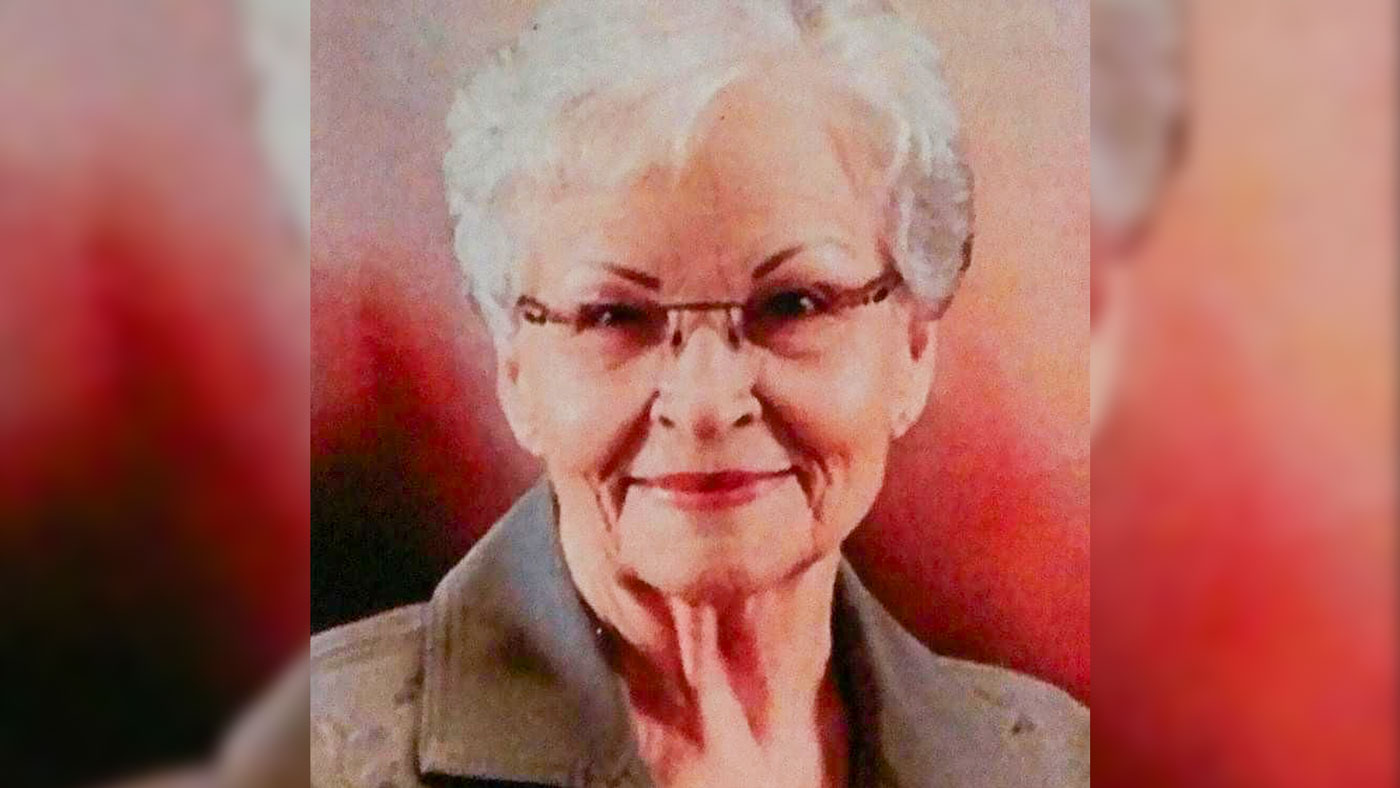
They were still grieving about a year later when cancer struck once more, this time in Samantha’s paternal family. Her Papa, Johnny Daniel – the charades cheat and a constant prankster – had colorectal cancer.
“That hit us really hard,” Samantha recalled.
Samantha was fortunate to grow up alongside both sets of grandparents in Lubbock. She cherishes the memories of their weekly visits, when she would play games at her Papa’s house and giggle at his ornery side.
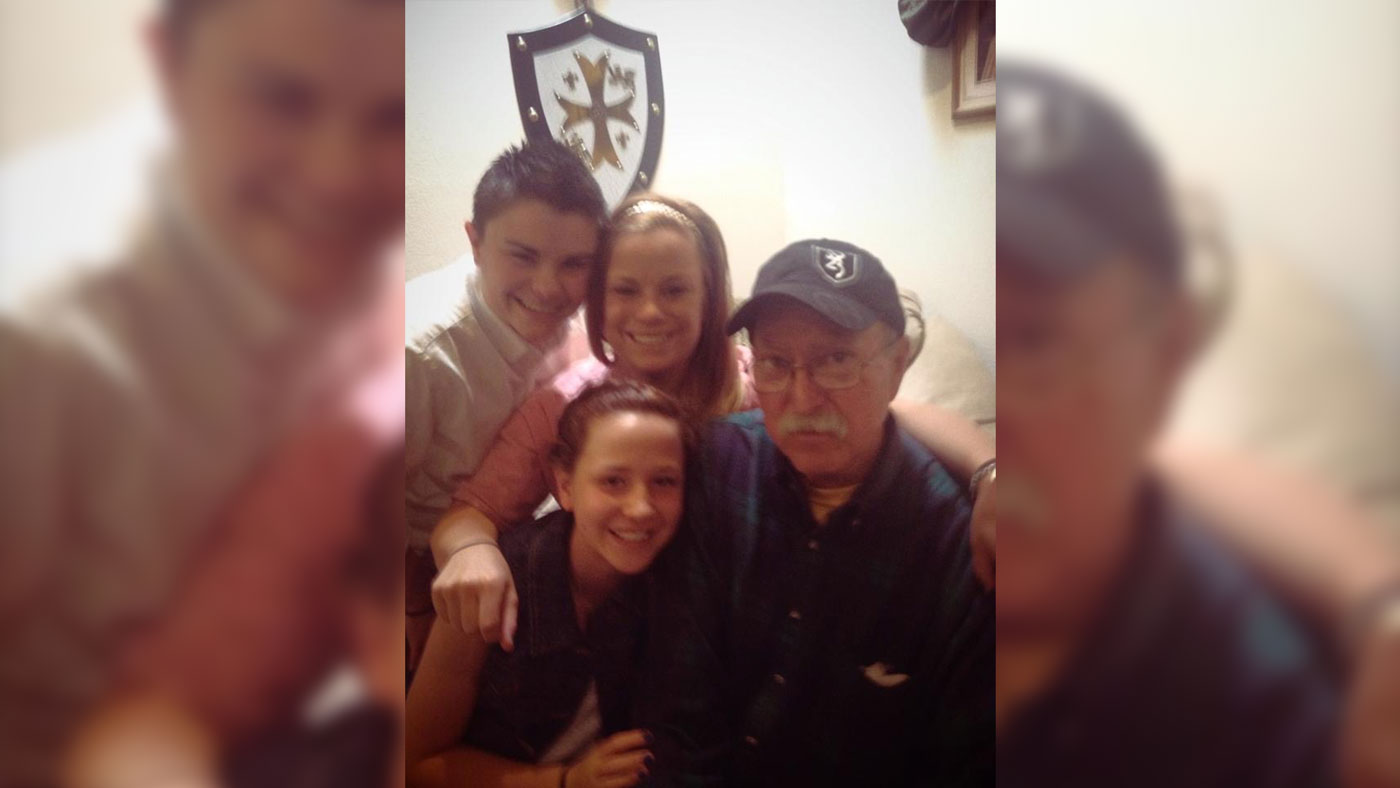
“You never knew what he was going to say or do,” Dana affectionately shared about her father-in-law. “The kids just adored him.”
The loss of her Papa, just two years after her Granny, left two holes in Samantha’s heart.
And there was just one way she could think to patch them.
The Decision to Donate
Samantha first learned about blood stem cell transplants when her Granny would have benefited from them, if not for her age and the severity of her illness. After she passed, Samantha began to do further research and discovered Be The Match: a global leader in bone marrow transplantation that connects patients with their donor match for a life-saving marrow or blood stem cell transplant.
Without a second thought, Samantha signed up to become a donor in 2015.
“I did the saliva swab and sent it back,” she said, “but I never heard anything back from it.”
Life passed by in a flurry for Samantha. She graduated from Texas Tech in 2016, began a career in marketing and communications, then became a wife and mother to a son in 2020.
It was not until August 2023 she received an unexpected phone call, email, text and even a letter from Be The Match.
“They found I was a match,” she said. “I think I cut them off before they even finished asking if I was still interested in donating because I already knew the answer was yes.”
Instead of a surgical bone marrw transplant, Samantha learned her recipient would have to receive her blood stem cells because he would tower over her small frame at 5 feet tall. The height difference would require the removal of too much bone marrow from her, placing her at risk.
Once Samantha assured her husband that donating her blood stem cells would be safe, she began the process.
During the initial phase, when Samantha learned her teenage recipient’s diagnosis, she had instant confirmation she made the right decision. He had acute lymphoblastic leukemia – the same cancer as her Granny.
“I was overcome with emotions when I heard that,” Samantha explained. “I was like, ‘Wow,’ because I felt like my grandmother sent him to me.”
That strong connection to a stranger carried Samantha through a series of at least eight blood draws that confirmed her perfect match to her recipient, which led to a physical and an entire blood panel.
“Going through my pregnancy, I had preeclampsia, so I was used to getting blood drawn like crazy,” she said. “But this time, I had to get so much drawn that it was almost like donating blood and it was a little rough. I got queasy and tired, but they were really good about taking care of me.”
Then came a series of medication injections that would cause her bone marrow to produce more stem cells. It was the same medication her recipient was taking, except in her case, it caused “stem cell overload.”
“The shots were the hardest part for me because it felt like I had whiplash with the flu,” she said. “It’s weird because you hurt, but you don’t know how to explain your hurt. It’s like your bones are literally hurting: my skull, ribcage and my spine. So I was on a heating pad.”
During this time, her 3-year-old son, Trayson, fixed her up with a series of kisses he was convinced made her feel better.
“He was funny,” she laughed. “He’s not used to seeing Mommy sick, lying on the couch and hurting. I’m usually up and playing, so he wanted to cuddle with me on the couch. He was just so sweet.”
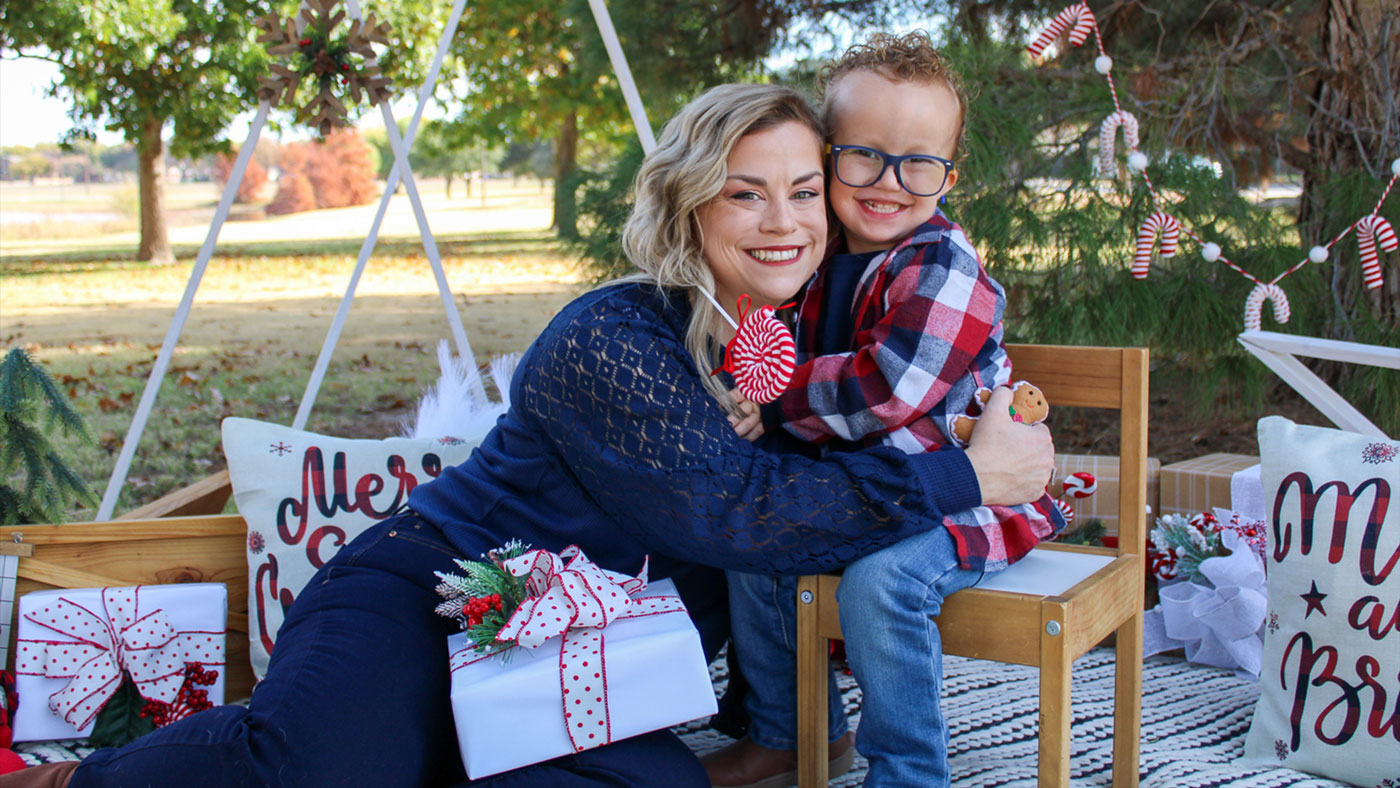
Trayson became part of the reason she gladly endured the pain.
“I would hope somebody would do this for my son if he was ever in that circumstance,” she said, “especially with this this boy being so young.”
As the big day of Samantha’s donation approached, she felt comforted by the ability to work remotely for Texas Tech and the paid time off for blood stem cell donors. Be The Match also covered all the expenses of her flight and hotel room, where she rested the evening beforehand.
Samantha arrived at the donation site in Houston at 7 a.m. Oct. 26 alongside her husband. She was met with another injection of medication by a team of nurses she describes as phenomenal.
“They walked me through every single step of what we were doing,” she said. “They told me I was going to be there for a long time, and I would get tired because I had to give a lot.”
Samantha had an IV in one arm and the other arm had to be stable since the needle was large enough to draw her blood stem cells. She was uncomfortable and still hurt all over, but Samantha couldn’t help but think of her recipient.
“A Be The Match person came in and told me the process of what he was going through that day as well,” she said. “What I was doing was nothing in comparison.”
The more blood stem cells that were drawn from Samantha, the better she began to feel. Her collection filled a bag with an off-red, slightly purple color – a tone the nurses monitored closely.
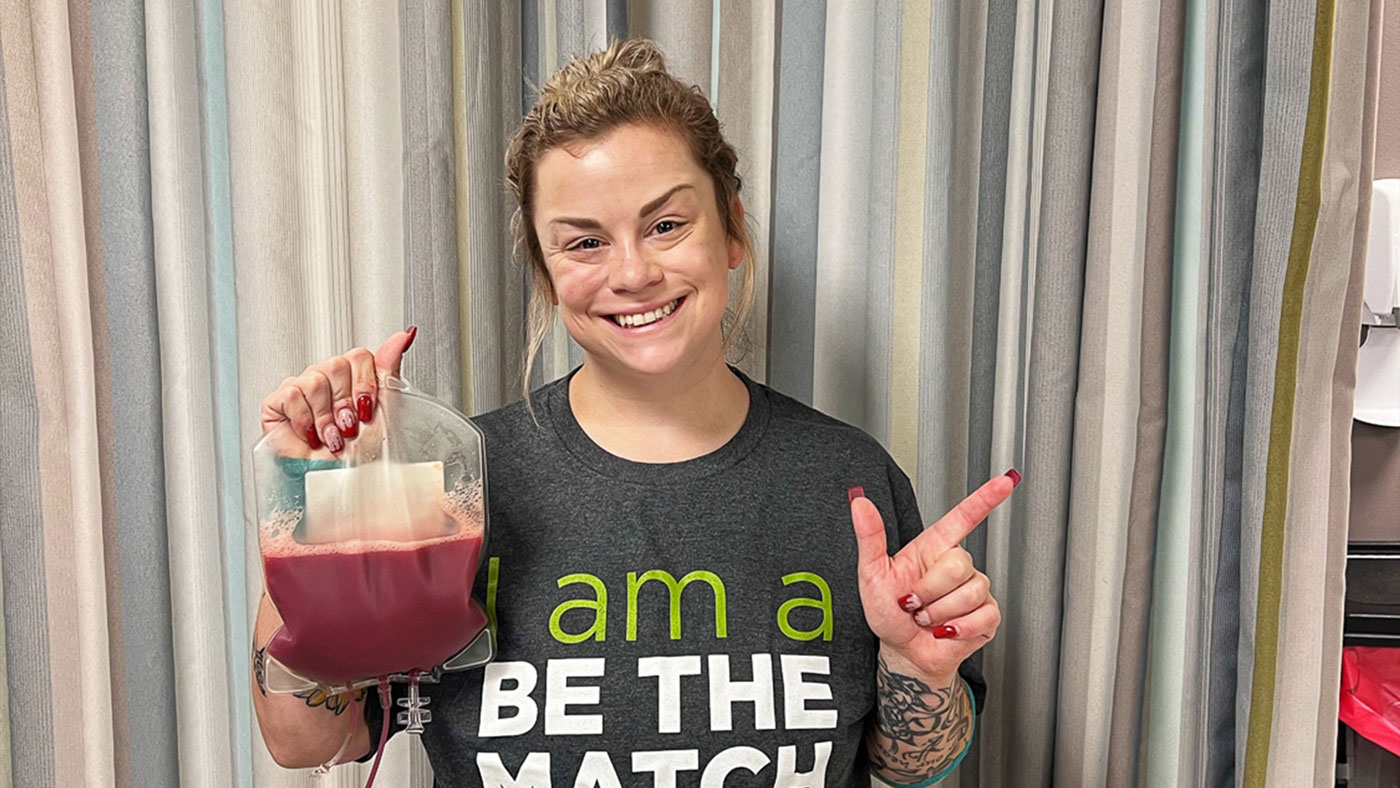
She was told she would be there for two days, which felt like forever as she fought a headache and drowsiness.
To her surprise, after 9.5 hours, Samantha was done.
“That’s why I was feeling so crazy was because my body did a great job of producing the stem cells,” she said. “They were amazed I was able to do that at such a fast pace because of my size.”
Samantha proudly held up her donation with the blood-art manicure she received for the occasion. She did it – she could finally help someone escape her grandparents’ fate – and it wasn’t as bad as she expected.
“If they were to call me next week and say, ‘Hey, he needs more,’ I still wouldn’t need to think about it,” she said. “I’d do it in a heartbeat.”
Reflection Back Home
The next day, Samantha and her husband returned home so she could recover in the company of her favorite nurse of all – her mother, who took off from work to care for her.
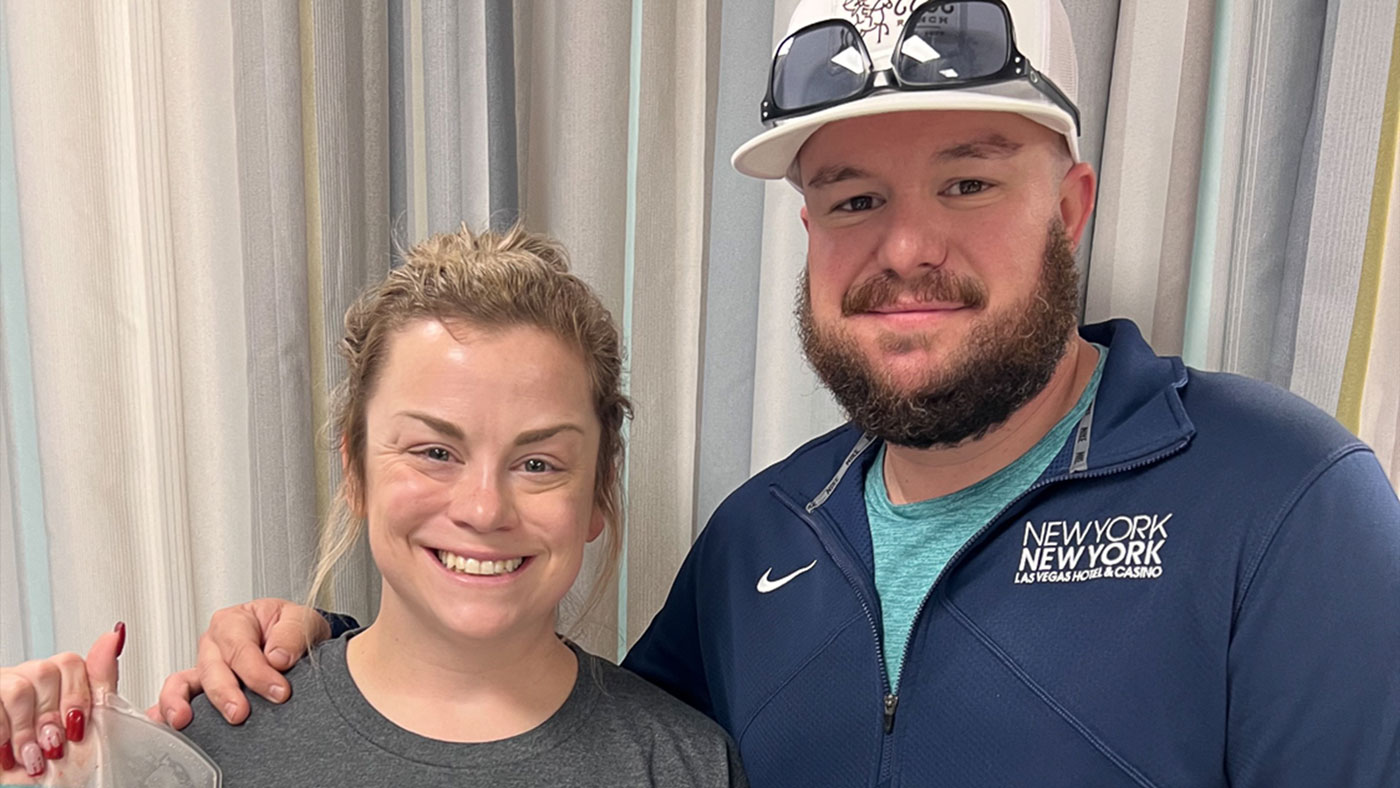
Dana stared at her exhausted daughter in pure admiration of her selfless act to honor her Granny and Papa.
“I know they’re proud,” Dana said, her voice cracking. “Definitely proud.”
For the next week, Samantha contined to take it easy since her platelet and white blood cell counts were low enough she would be at risk of bleeding out if she became injured. With each day that passed, her energy and sense of normalcy returned.
She could only wish the same for the recipient of her donation.
“I’m hoping that since he’s had this transplant, he gets to go home,” Samantha said. “I know he’s been in the hospital for a long time, so I hope he gets to be in his own bed, eat his favorite foods and enjoy his family.”
Samantha will have to wait at least six months after the transplant for Be The Match to update her about the recipient’s status in order to fully understand the impact her donation had on his blood levels.
Then, a year from the transplant, she may have the chance to openly communicate and even meet with her recipient if he would like. In anticipation, Samantha has watched videos of similar moments on the Be The Match website.
“It is the coolest experience to see recipients meeting their donors,” she said. “It’ll make you cry.”
Samantha knows she is biased. This blood stem cell journey initiated from raw emotions she relived all over again as she took her time penning thoughts to share with her recipient – her mind a series of flashbacks between her favorite cheerleader and jokester.
She addressed the letter to her “recipient warrior,” signed with a heart from “your bone marrow buddy,” and sent it to Be The Match fulfilled with the most rewarding experience she has had since her welcome to motherhood.
“I’m always willing to put my personal life on hold if it means I am the only option for someone’s son to live,” she said. “If you can save a life by merely giving a piece of yourself, you should do it. That’s worth it all.”

